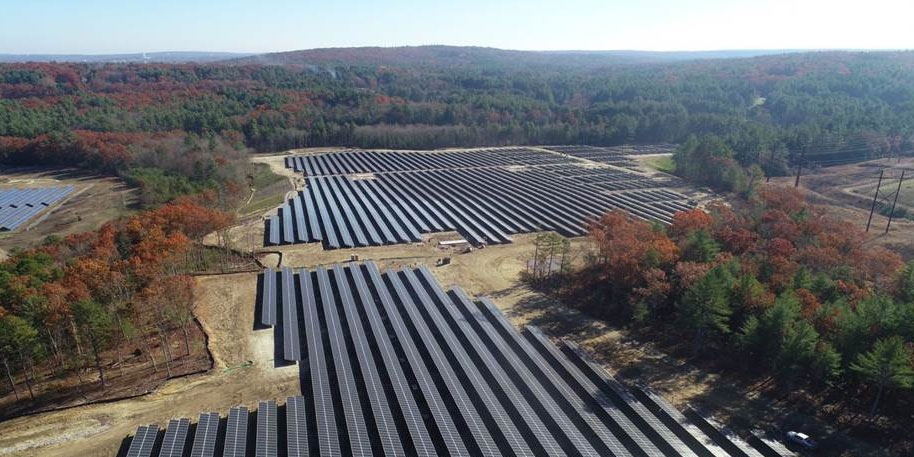
Something tells me public opinion on solar farms is going to involve a lot of “oops, we shouldn’t have done that.”
The people of West Greenwich are not happy that the giant solar farm in their town has not met the “you can only see it from an airplane” standard, according to Tolly Taylor, on WPRI:
“Does it meet the standard of you can’t see it anywhere but an airplane?” [Town Administrator Kevin] Breene said. “No. Are we happy about that? No.”
[Turning Point Energy Executive Vice President Adam] Beal told Target 12 his airplane comment was taken out of context, and points out the town signed off after construction was completed.He also said the company planted dozens of additional trees after the town asked it to.
“That vegetative buffering should provide adequate, opaque screening of the solar facility once it is partially or fully grown in,” Beal said.
Also, it turns out that this is New England, and vegetation tends to thin out for a large portion of the year.
Meanwhile, Turning Point Energy and Nautilus Solar Energy have announced that the “largest community solar project in Rhode Island” (pictured in the featured image of this post), over in North Smithfield, has “reached mechanical completion and will be fully operational in July.” The benefit? Key words emphasized in the following:
The King solar project is part of the State of Rhode Island’s Community Net Metering Solar Pilot Program which has helped to create hundreds of temporary jobs and provide savings to thousands of Rhode Island residents that have subscribed to the project.
That is, the Ocean State gets a small short-term employment boost and a mild supplement to existing energy sources, all heavily subsidized by other energy consumers and taxpayers. Naturally, the energy companies are hoping this was sufficient to prove the value and persuade the state to expand “the pilot program” for more clearing of trees and production of thneeds panels by slaves in China.
As the jobs go away, as the energy market simply readjusts with higher and higher prices, as neighbors discover that this uglification of the landscape isn’t as hidden as expected — let alone as technical complications emerge for operating, maintaining, and replacing the solar farms and (we can hope) some image or report finally forces the slavery thing to mass awareness— we can expect politicians grab for credit to turn into a search for blame.

